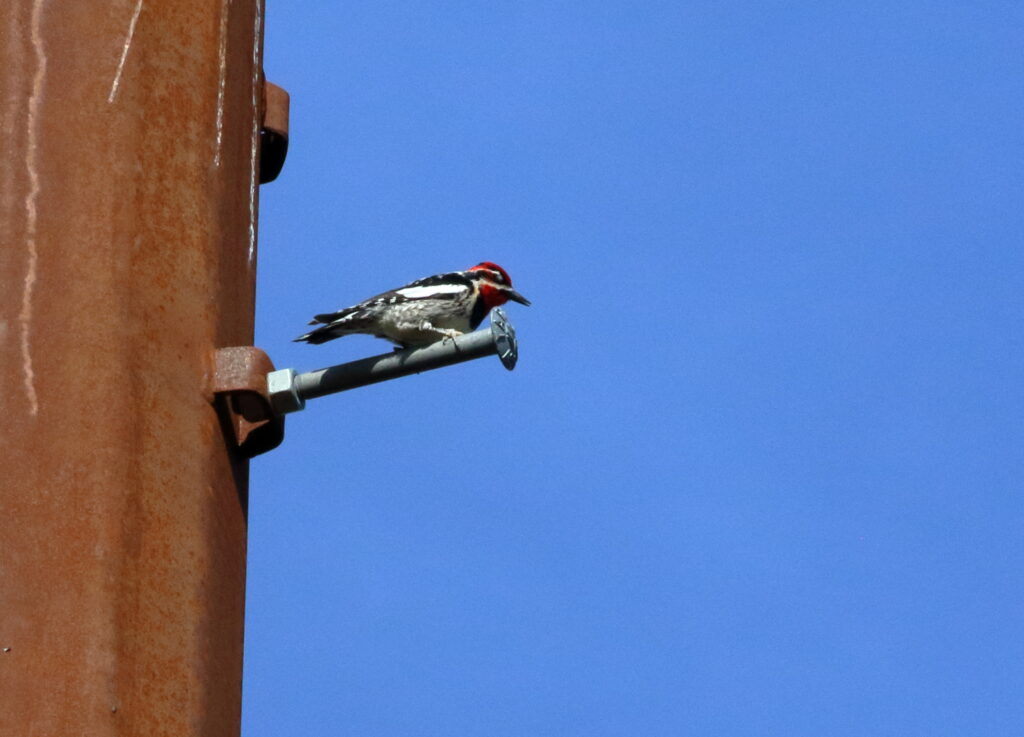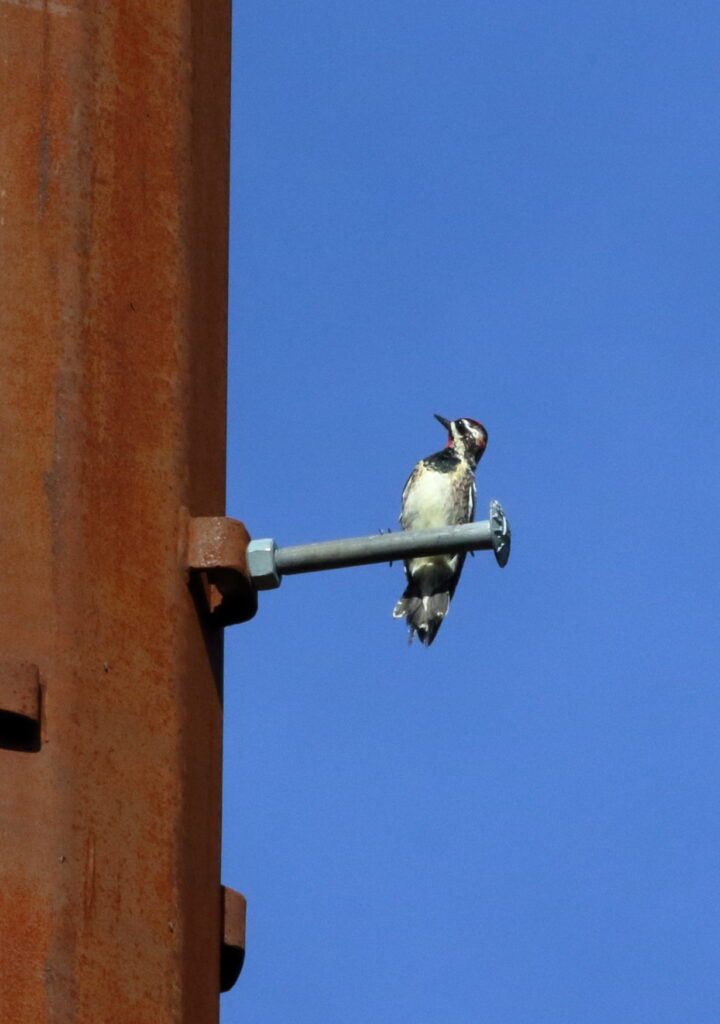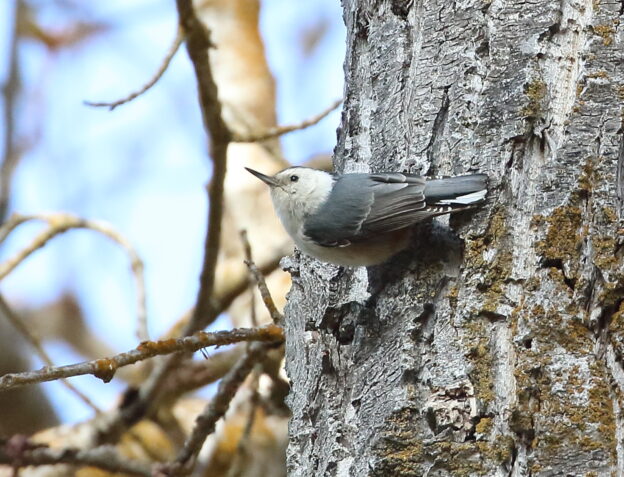Enjoy these posts? Why not subscribe at the box below and to the right? You know you want to!
After my inspiring outing with Paul Queneau on Thursday, believe it or not I had another “man date” the next day with our awesome former Scoutmaster, Tony Higuera. Tony and I would be meeting for coffee, not birds, so to continue my week of birding therapy I decided leave early and hit another great Missoula birding location close to Starbucks—Tower Street.
Honestly, I am still getting to know Tower Street. It consists of meadow, pine, and riparian habitats, and Braden and I have birded it four or five times, but heading in there Friday morning I really didn’t know what to expect. From the parking lot, I could hear flickers, House Finches, Pine Siskins, and Red-breasted Nuthatches. As I walked along the path paralleling the giant metallic power poles, I spotted and heard more of the usual suspects. Then, an incredibly loud metallic drumming sound startled me. “Holy cow!” I gasped. “You’ve got to be kidding me.”

The drumming’s staggered, uncertain pattern told me which species had made it, but where was it coming from? More important, how could it be so loud? I looked up at the immense metal power pole a few yards away. I mean, this was not one of the street lamps you see. It was HUGE—an amplifier at least twenty meters high and a meter or two in diameter. I searched all around it but couldn’t find a bird. Then, I spotted an inconspicuous, hunched down figure on a climbing stud high above me. It was a Red-naped Sapsucker—and it had just found the best drum set in woodpecker history!
I watched as the bird again drummed against the power pole, and it immediately got a response from another Red-naped that flew in to investigate. I couldn’t help but laugh out loud and wondered if the bird would permanently stake out this amplified windfall.

During the next hour, I saw or heard another three or four sapsuckers and nothing else matched them, but when I reached the river, I heard a strange bubbly sound. At first I didn’t know what it was, but then recalled a song that Braden has been trying to teach me the last couple of years—the “giggle call” of a White-breasted Nuthatch. I didn’t see the bird at first, but then spotted it with its partner. Even more fun, I got to see the two of them mate. While WBNUs are by no means rare, we see them on only about 20% of our forest visits, so this was a real treat—and the only ones I would see during my Birding Therapy Week. That doesn’t mean my good birding was at an end. The next morning, in fact, I would experience my best birding—and therapy—of the week . . .


